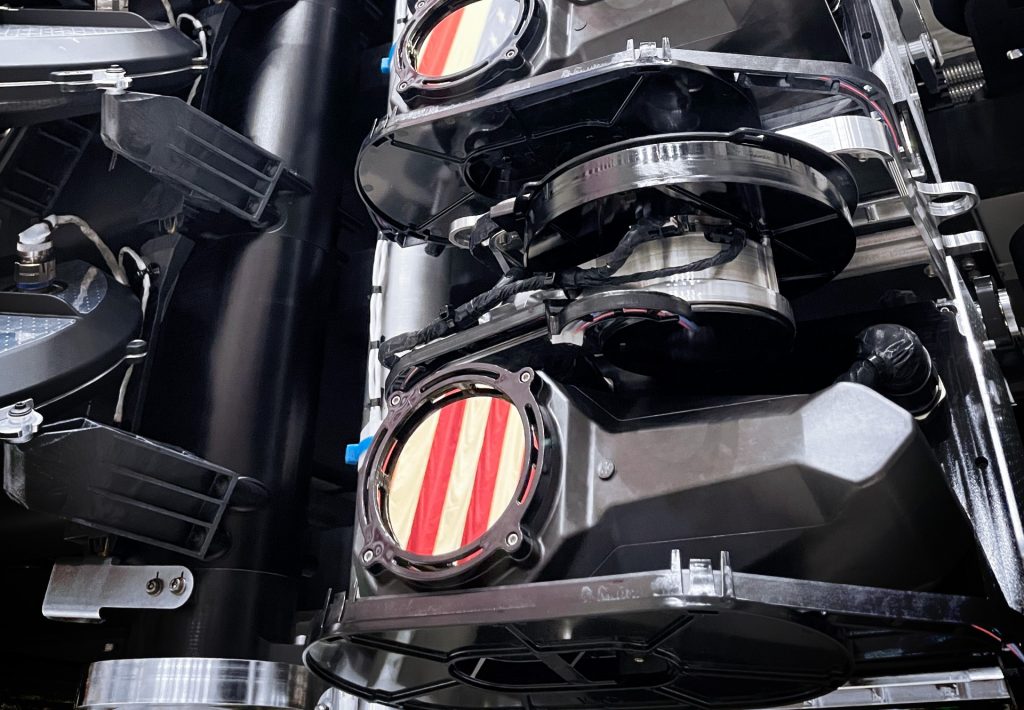SpaceX reveals Starlink laser capacity
February 2, 2024

SpaceX now has a mega-constellation of some 5,400 Starlink satellites in orbit. Some of these are its Version 2 craft with sophisticated laser links and extremely rapid inter-satellite links.
The 9,000+ installed laser links amount to a massive throughput for the fleet which Starlink says is 42 PetaBytes (PB) per day or 1260 PB/month. There are 1024 Terabytes in a PB.
The news came from SpaceX laser engineer Travis Brashears, speaking at an event in San Francisco. Brashears said Starlink’s laser system was able to connect two satellites over 5,400 kms (3,355 miles) apart. The link was so long “it cut down through the atmosphere, all the way down to 30 kms above the surface of the Earth,” he said, before admitting the connection broke.
“Another really fun fact is that we held a link all the way down to 122 kms while we were de-orbiting a satellite,” Brashears continued. “And we were able to downstream the video.”
He added that most of the satellites equipped with lasers used its Gen 3 version equipment. However, SpaceX had now further upgraded their kit to a Gen 4 version. SpaceX can manufacture about 200 units per week, but to drive down costs, the company uses off-the-shelf components, including sensors and actuators.
Industry consultant Dr Tim Farrar, of TMF Associates, suggests that geostationary satellite operator Viasat was claiming capacity of 15 PB per month a few years ago. Starlink, even at a probable peak capacity of nearer 5.6 Tb/second translates at a usable 500 PB/month. “Starlink already has the majority of all satellite data traffic in the world today.”
Brashears’ data:
Longest link distance: 5400km
Number of acquisitions/day: 266,141
Max data rate: 200 Gb/s
Fastest acquisition: 12 seconds
Minimum Altitude link: 122 kms
Hawaiian Airlines has commenced installation of SpaceX’s Starlink Aviation inflight connectivity system on its Airbus A321neo fleet. The installations have begun after the company finally received the green light from FAA.
The news prompted a post on X from Elon Musk, who said: “Starlink team is working hard to ensure an amazing Internet connectivity experience for Hawaiian Airlines flyers. Should be profound and feel [as if] you’re on the ground, not even in an airplane.”
Starlink’s Aviation division is known for its satellite-based internet system that promises to revolutionise in-flight connectivity. With this system, Hawaiian Airlines can now provide passengers with internet speeds that are up to 10 times faster than conventional in-flight Wi-Fi. And the best part? They can do it at a much lower cost, thanks to Starlink’s constellation of low Earth orbit satellites.
According to reports, the FAA will issue a rocket launch licence for SpaceX’s giant Starship. Current thinking is for a launch in late-February.
Other posts by Chris Forrester:
- Scotland’s rocket launch gets closer
- SpaceX tops 6,300 Starlinks; IPO rumours
- Full details of SES, Intelsat deal
- Ariane 6 launch campaign underway
- Virgin Galactic in stock split
- Thuraya-3 suffers major problem
- AST SpaceMobile hit by Class Action
- Optimism under threat at SES
- Rivada visits Terran Orbital’s manufacturing HQ
